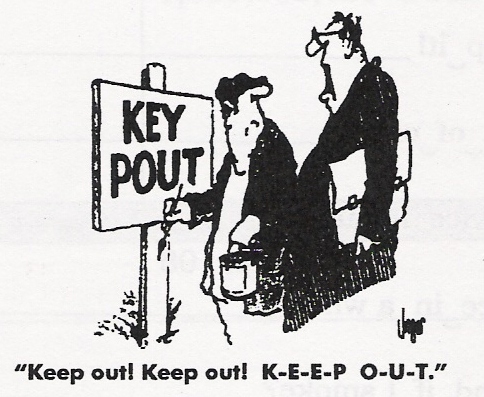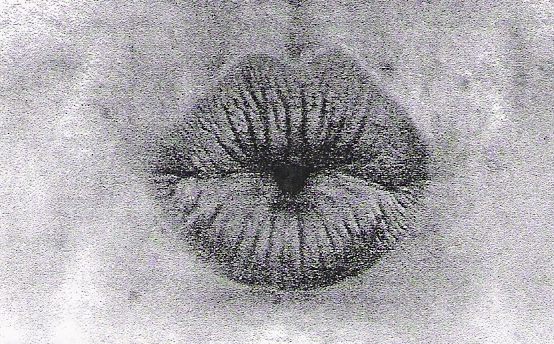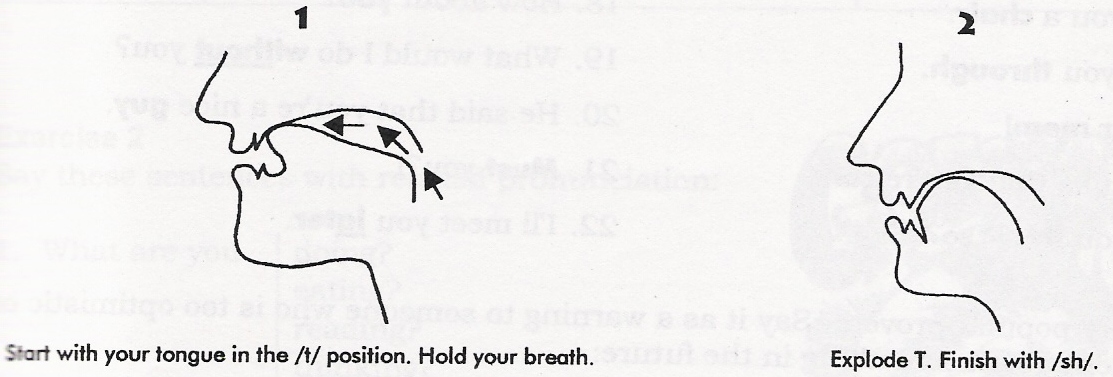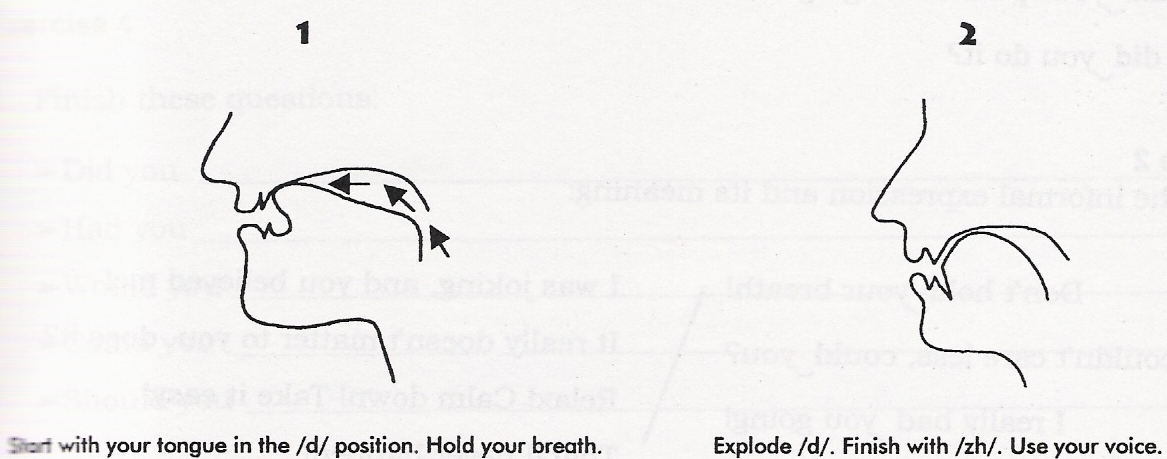
Linking and Blending
Lesson 5

The joining of two or more words in a rhythm or thought group is called "linking".
|
minute |
win it |
|
tower |
how are |
|
|
lock it |
|
goddess |
got us |
|
planet |
plan it |
|
terror |
where are |
|
letter |
let her |
|
often |
off an |
In the second column, what is the last sound in the first word? consonant vowel
In the second column, what is the first sound in the second word? consonant vowel
Rule: When the last sound of a word in a rhythm group is a consonant, and the first sound in the following word is a vowel, pronounce them like one word.

In spoken English, unstressed pronouns beginning with /h/, like he, her and him, usually drop the /h/ sound after a consonant.
Listen to these sentences:
Give (h)er a dollar.
Is (h)e ready to go?
I told (h)im to call me.
|
Pronoun |
Pronunciation |
|
he |
/i/ |
|
his |
/iz/ or /əz/ |
|
him |
/im/ or /əm/ |
|
her |
/ər/ |
|
them |
/əm/ |
NOTE: You can drop the /h/ and /th/ in the pronouns he, him, her, his and them when these words are: unstressed, at the end of a sentence, in the middle of a sentence. Do not reduce these words if they start a sentence.
He gave me the money.
Give the money to (h)im.
1. I like her.
2. Is he here?
3. Was he sleeping?
4. Ask her about it.
5. Look them up.
6. Give her a call.
7. She's crazy about him.
8. Did he or didn't he?
9. Where's his coat?
10. Is he very busy?
Listen and Repeat. Pay attention to linking and the slight pause between thought groups. You will hear me repeat each sentence 2 times.
Stop over at 8 / and drop off my books.
Go to sleep early / and wake up at 7.
She's not at all tired / but it's still early.
We got out of the meeting / at eleven thirty.
I had a good time / on my weekend off.
Instead of studying, / we rode around in the car.
After a week of tests, / we took off for Hawaii.
When you back up, / look out for other cars.
The trip takes an hour / by bus or by car.
The place is familiar, / but the address isn't.
When's (h)e coming / and where's (h)e staying?
He's already noticed / that she's absent.
The problem is / some of (th)em aren't here.
I don't have time off, / so I can't come over.
He works in an office / on East Avenue.
I ran into a friend / when I was shopping.
They're announcing the news / in March or April
For information, / please call (h)er on Monday.
Tomorrow we'll ask (h)im / to tell us about it.
The final exam / was full of difficult questions.
Download the worksheet and record the sentences in the voice board: Linking Consonant to Vowel.
Listen to linking words ending in /iy/, /ey/, /aɪ/, and /ɔɪ/ to other words beginning with vowel sounds. What sound links the words together?
|
/iy/ +vowel |
/ey/ +vowel |
/aɪ/ + vowel |
/ɔɪ/ +vowel |
|
free us |
play out |
why are |
toy is |
|
we are |
say it |
I am |
enjoy it |
|
tree is |
day is |
try it |
annoy us |
The sound "yuh" links the vowels /iy/, /ey/, /aɪ/, and /ɔɪ/ to words beginning with vowel sounds. Keep in mind that the tongue moves up and forward when making these vowel sounds.

Listen to words ending in /uw/, /ow/, and /aʊ/. What sound links vowel to vowel?
|
/uw/ + vowel |
/ow/ + vowel |
/aʊ/ +vowel |
|
who are |
go out |
how are |
|
you ask |
know us |
now us |
|
threw all |
grow up |
cow is |
The sound /w/ links the words that end with /uw/, /ow/, and /aʊ/ to words that begin with vowels.
Remember: You have to round your lips to make this sound!!

Listen and Repeat. Pay attention to linking and the slight pause between thought groups. You will hear me repeat each sentence 2 times.
She often works/ in the evening.
Sometimes we argue / and disagree on things.
Please try to stay awake / and pay attention.
Students may ask questions/ the day of the test.
Why are you wearing / your tie and jacket?
I arranged for a meeting / in my office.
I enjoy eating dessert / after a meal.
If you annoy us / you must leave.
Who is going / to do it?
The new airplane / is too expensive.
If you know (h)is number / you can call (h)im.
Although I want to go / I know it's a bad idea.
How are we going to drive / when the cow is in the road?
The teacher doesn't allow us / to use dictionaries.
Download the worksheet and record the sentences in the voice board: Linking Vowel to Vowel.

Here are some phrases. The consonant sound at the end of each first word is the same as the consonant sound at the beginning of the second word.
How many times do you hear the double consonants pronounced?
Example: Do you hear "hot / tea" or "hotea"?
|
/t/ hot tea |
/r/ they're ready |
|
/p/ sharp pin |
/l/ yell loudly |
|
/k/ black cat |
/dʒ / orange juice |
|
/d/ bad day |
/tʃ / beach chair |
|
/g/ big girl |
/ʃ / wash shoes |
|
/m/ some money |
/s/ this song |
|
/n/ phone number |
/v/ expensive vase |
Rule: When two of the same consonant sound s are between words in a rhythm group, blend them together like one consonant. The two consonants are not pronounced two times.
Note: Be sure to lengthen (make longer) the consonant sound you are blending.
Stop consonants (called this because they stop the air flow out of the mouth)--- /p/ and /b/, /k/and /g/, and /t/ and /d/---at the ends of words are spoken at almost the same time as the first consonant sounds in the next words. HOLD the stop sound until you are ready to say the next sound.
Examples:
cab driver (hold /b/ until you are ready to say /d/
stop sign
keep trying
lap top computer
look like
big problem
To practice linking and blending, repeat these phrases after the speaker.
Example:
|
Cub Scouts |
hold /b/ until you are ready to say /s/ |
|
help out |
move the /p/ to the beginning of the next word |
|
green notebook |
lengthen the /n/ |
For each set of words, listen and repeat.
|
job training job ladder job offer job benefits |
look tired look sick look up look carefully |
|
lab coat lab assistant lab equipment lab procedures |
big debt big meeting big game big organization |
|
help teach help make help organize help people |
got caught got thirsty got tired got arrested |
|
deep trouble deep water deep thinker deep in debt |
caused misunderstanding caused problems caused deaths caused anxiety |
Download this worksheet and record the phrases in the voice board: Blending Consonant to Consonant.
What sound change do you hear when /t/ is blended with /y/?
Don't you know?
Won't you go?
Haven't you gone?
Rule: When a word ends in /t/ and the next word begins with /y/, the blended sound is /tʃ/ as in choose.

|
Connection |
Sound |
Example |
|
t + you ts + you /tʃ/ + you |
chu or chə |
I'll never forget you. Tell me how many hats you want. I can't catch you. |
|
t + your ts + your /tʃ/ + your |
chər |
I've got your book. What's your name? Watch your step. |
|
t + you're ts + you're /tʃ/ + you're |
chər |
I don't know what you're doing. Tell me how many hats you're wearing. What's that itch you're scratching? |
Listen and Repeat.
1. I want you to come.
2. What would I do without you?
3. Is that the best you can do?
4. She lost your number.
5. What about you?
6. How about you?
7. I'll meet you later.
8. It's your mom.
9. That's your responsibility.
10. I see that you're busy.
Download the worksheet: Making Word Connections with /t/ + /y/and underline where the linking occurs. Submit through CE6 Assignments Tool.
Would you go?
Could you help?
I called you.
Rule: When a word ends in /d/ and the next word begins with /y/, the blended sound is /dʒ/ as in job.

|
Connection |
Sound |
Example |
|
d + you dʒ + you |
ju or jə |
I told you! I'll page you. |
|
d + your dʒ + your |
jər |
Did your wife call? Judge yourself. |
|
d + you're dʒ + you're |
jər |
She said you're coming. George! You're here. |
Listen and Repeat.
1. Did you go yesterday?
2. Would you like some?
3. Should you eat something?
4. Could you go with me?
5. Did your mom call?
6. Had you thought about it?
7. Should your dog go?
8. Could your friend help?
9. Would your daughter stay?
10. Had your package arrived?
Download the worksheet: Making Connections with /d/ and /y/ and underline where the linking occurs.